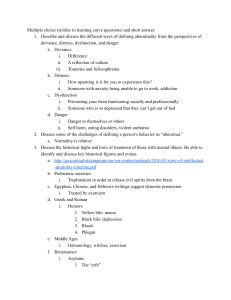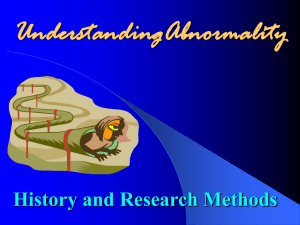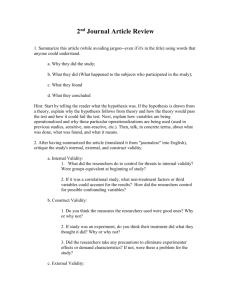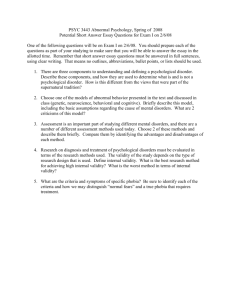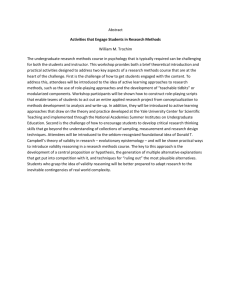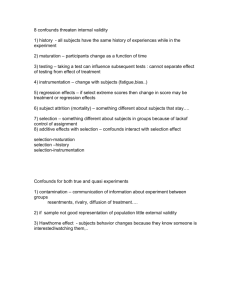Abnormal Psychology
advertisement
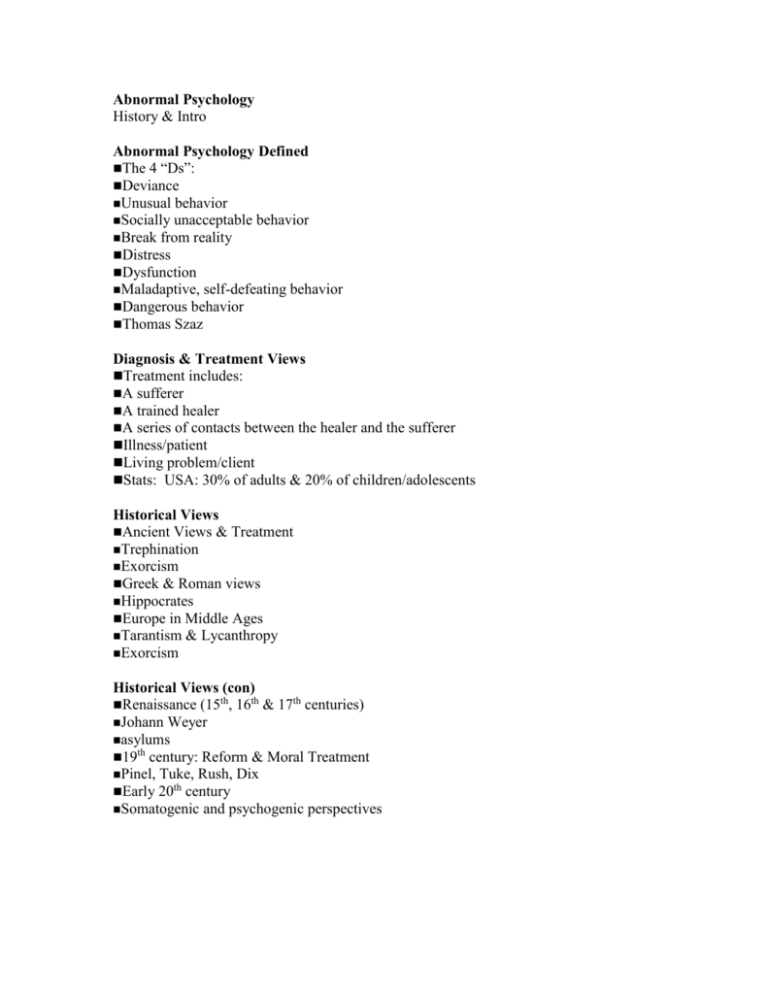
Abnormal Psychology History & Intro Abnormal Psychology Defined The 4 “Ds”: Deviance Unusual behavior Socially unacceptable behavior Break from reality Distress Dysfunction Maladaptive, self-defeating behavior Dangerous behavior Thomas Szaz Diagnosis & Treatment Views Treatment includes: A sufferer A trained healer A series of contacts between the healer and the sufferer Illness/patient Living problem/client Stats: USA: 30% of adults & 20% of children/adolescents Historical Views Ancient Views & Treatment Trephination Exorcism Greek & Roman views Hippocrates Europe in Middle Ages Tarantism & Lycanthropy Exorcism Historical Views (con) Renaissance (15th, 16th & 17th centuries) Johann Weyer asylums 19th century: Reform & Moral Treatment Pinel, Tuke, Rush, Dix Early 20th century Somatogenic and psychogenic perspectives Current Trends Psychotropic meds deinstitutionalization Outpatient treatment Community Mental Health centers Crisis Intervention Centers Family Service Centers Programs exclusive to one disorder (suicide, substance-abuse, eating disorders, etc) Prevention Programs Positive Psychology Insurance coverage Managed Care Program Current Trends Today’s Professionals Outline 1) The task of a clinical scientist 2) Different methods of research utilized in Abnormal Psych 3) Advantages & Disadv. Of each method 4) The best strategy for research today Clinical Scientist Search for nomothetic truths Scientific Method Theory Hypothesis variables Research Methods Case Study Correlational research Experimental research Validity Internal External Reliability Confounds Sampling of the population Case Study A detailed & interpretive description of one person or group Behavior observation Contributions: A) individual understanding B) can study unusual cases C) source of new ideas Problems: A) biased observer B) subjective evidence C) low internal & external validity Correlational Research Determines co-relationship between variables Line of best fit Direction: Positive/Negative Magnitude: strong/weak Pearson’s Correlation coefficient (r) Correlation (con) Contributions: A) high external validity B) can be basis for further research C) have predictive values Problems: A) low on internal validity B) correlation does NOT imply causation Experimental Research Variables manipulated IV DV Controlling for Confounds Control Group Experimental Group Random Assignment Blind design protects against bias Single, double Experiment (con) Contributions: A) provides causal info B) reliable C) high internal validity Problems: A) humans multi-dimensional B) laboratory not always real-life C) animals comparable to humans? Other Research Genotype/phenotype Kinship Studies: helps to determine genotype/phenotype Twin studies Adoptee studies Special Correlational Studies: A) Longitudinal study B) The Epidemiological Method The survey: rates of occurrence of disorders Incidence (new) & prevalence (total) Helps researchers identify groups at risk for a particular disorder WHO Global Status Report on Alcohol (2004): Global deaths in 2001 from alcohol use disorders, by age group and sex Variations in Experimental Design Help deal with the “human problem” Quasi-Experimental Design: do not form groups, but use pre-existing groups Natural Experiment: study natural occurrences (terrorist attack, hurricane) Variations in Experimental Design (con) Analogue experiment: lab depicting real life (Ex. Harlow’s classic “Contact Comfort” Study) Single-Subject Exp.: observe single subj. before & after IV manipulation ABAB Multiple baseline
